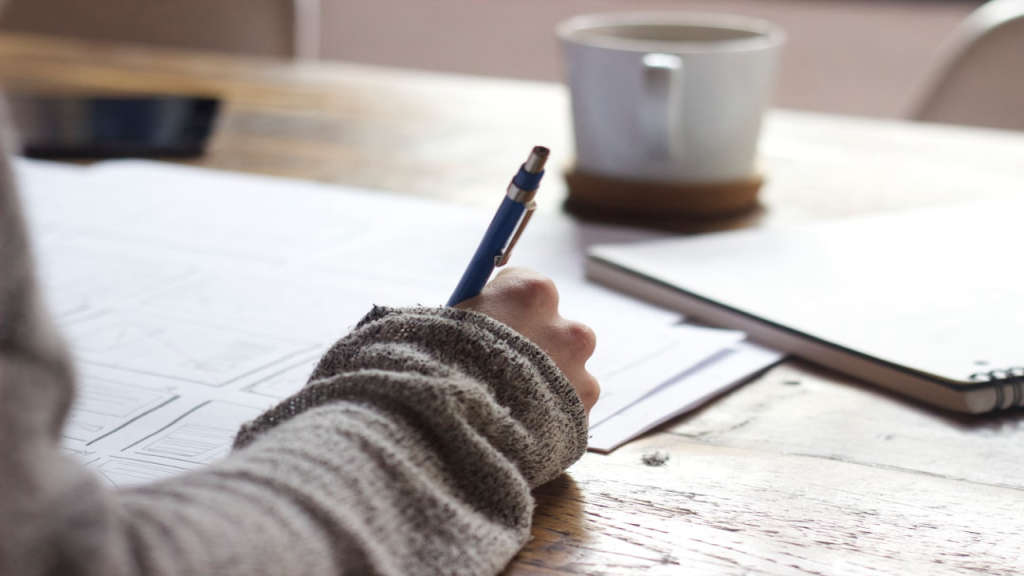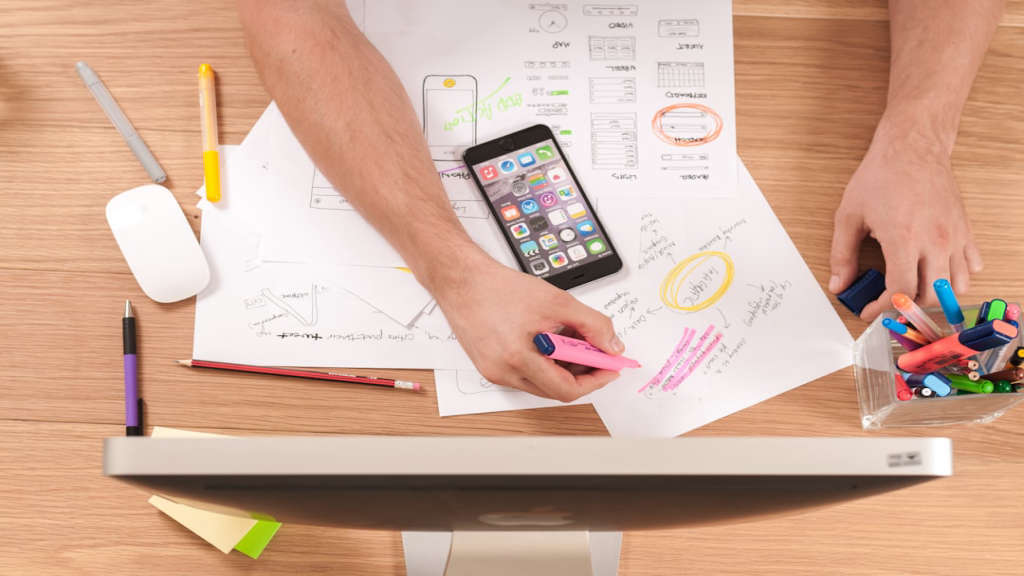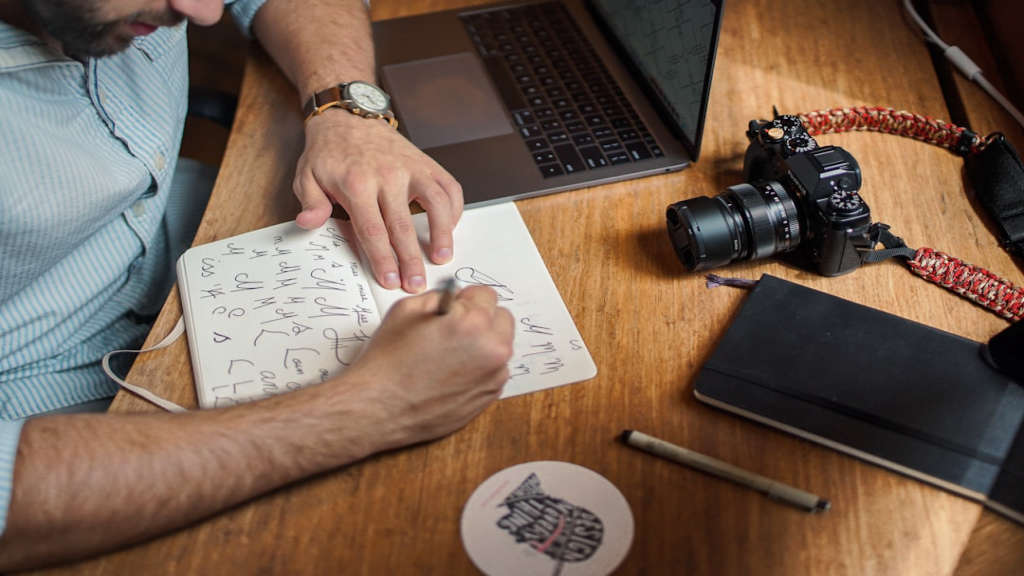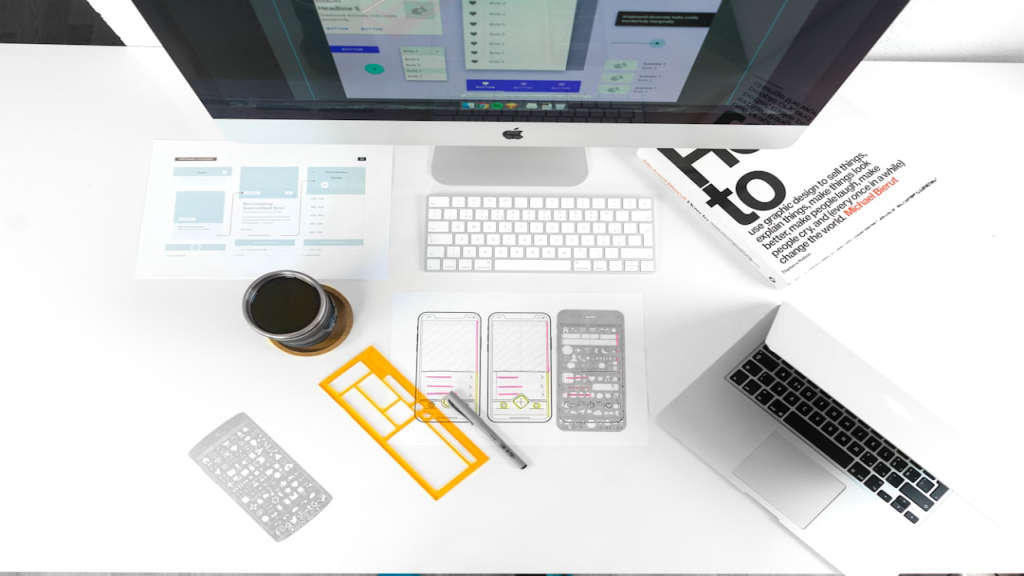
As we look ahead to 2024, the world of graphic design is evolving at a rapid pace, with new trends and techniques shaping the way we create and consume visual content. The Future of Design: Emerging Graphic Trends in 2024 explores the exciting developments that are set to define the industry in the coming years.
Main Points:
- Graphic Design Trends 2024: In 2024, we can expect to see a shift towards more immersive and interactive design elements.

Interactive UI Designs: Engaging Users in New Ways
As we look towards the future of graphic design in 2024, one key trend that continues to gain momentum is the use of interactive UI designs. These designs are not only aesthetically pleasing, but they also engage users in new ways, creating a more immersive and dynamic experience.
The Future of Graphic Design in 2024:
With advancements in technology and the rise of digital platforms, graphic designers are constantly seeking innovative ways to capture the attention of their audience. Interactive UI designs offer a unique opportunity to connect with users on a deeper level, encouraging them to actively participate in the design process.
Top Trends in Interactive UI Designs for 2024:
- Augmented Reality Experiences: Augmented reality is becoming increasingly popular in graphic design, allowing users to interact with virtual elements in the real world.
- Micro-Interactions: Micro-interactions are small animations or feedback loops that enhance user engagement and create a more intuitive browsing experience.
- Personalized Interfaces: Designers are now focusing on creating personalized interfaces that cater to the individual preferences and needs of each user, making the design more relatable and engaging.
Overall, the future of graphic design in 2024 is undoubtedly moving towards a more interactive and user-centric approach. By incorporating interactive UI designs into their work, designers can transform the way users interact with digital content, creating a more engaging and memorable experience for all.

Minimalism Meets Maximalism: Balancing Simplicity and Complexity
When it comes to design, the clash between minimalism and maximalism has been a longstanding debate. Minimalism, with its clean lines and simple forms, focuses on the principle of “less is more.” On the other hand, maximalism embraces bold colors, intricate patterns, and a more eclectic approach to decor. While these two design styles may seem like polar opposites, finding a balance between simplicity and complexity can create a harmonious and visually appealing space.
The Art of Minimalism
Minimalism is all about stripping down design to its essential elements. It is often associated with a sense of calm, clarity, and order. A minimalist space typically features neutral colors, clean surfaces, and a lack of clutter. The key to successful minimalism is to carefully curate your belongings, keeping only what is necessary and meaningful. By embracing simplicity, you can create a space that feels serene and uncluttered.
The Drama of Maximalism
Maximalism, on the other hand, is all about embracing excess and abundance. It is characterized by bold colors, rich textures, and an eclectic mix of furnishings. A maximalist space is vibrant, energetic, and full of personality. While maximalism may seem chaotic at first glance, there is a method to the madness. By layering patterns, textures, and colors, you can create a dynamic and visually stimulating environment.
Finding Balance
So, how can you balance the simplicity of minimalism with the complexity of maximalism? The key is to focus on a few key elements that will make a statement in your space. For example, you could incorporate a bold piece of artwork or a statement furniture item into an otherwise minimalistic room. Alternatively, you could add touches of minimalism to a maximalist space to create visual breathing room. By finding the right balance between these two design styles, you can create a space that is both visually interesting and harmonious.
| Minimalism | Maximalism |
|---|---|
| Simple forms | Bold colors |
| Clean lines | Rich textures |
| Neutral colors | Eclectic mix |
In conclusion, the balance between minimalism and maximalism is all about finding harmony in the juxtaposition of simplicity and complexity. By carefully curating your space and incorporating elements from both design styles, you can create a space that is both visually stimulating and serene. So whether you lean towards the clean lines of minimalism or the bold colors of maximalism, finding a balance that speaks to your personal style is key to creating a space that feels uniquely yours.

Augmented Reality Integration in Graphic Design
As technology continues to advance, the world of graphic design is constantly evolving. One of the most exciting developments in recent years has been the integration of augmented reality into the field. Augmented reality, or AR, is a technology that superimposes a computer-generated image on a user’s view of the real world.
This integration has opened up a whole new world of possibilities for graphic designers. With AR, designers can create interactive and immersive experiences for their audience. Imagine being able to point your phone at a poster and see it come to life, or being able to try on virtual clothing before making a purchase.
The possibilities are endless when it comes to augmented reality in graphic design. Designers can now create dynamic and engaging visuals that truly captivate their audience. AR allows for a level of interactivity that was previously unimaginable, taking design to a whole new level.
Overall, the integration of augmented reality in graphic design is an exciting development that is sure to shape the future of the industry. Designers who embrace this technology and push the boundaries of what is possible will undoubtedly stand out in a crowded marketplace.
So, if you’re a graphic designer looking to stay ahead of the curve, now is the time to start exploring the world of augmented reality integration. The future of design is here, and it’s augmented.
Sustainable Design Practices for a Greener Future
In today’s world, the importance of sustainable design practices cannot be overstated. With climate change and environmental degradation becoming more pressing issues, it is crucial for designers to adopt sustainable approaches to their work. By integrating ecofriendly materials, energy-efficient technologies, and green building principles into their designs, they can not only reduce their environmental impact but also create healthier and more sustainable spaces for people to live and work in.
Benefits of Sustainable Design
There are numerous benefits to incorporating sustainable design practices into architectural and interior design projects. Some of these benefits include:
- Reduced energy consumption: Sustainable designs are often more energy-efficient, resulting in lower energy bills for occupants.
- Improved indoor air quality: By using low-VOC paints and materials, sustainable designs can promote better indoor air quality and overall health.
- Enhanced natural light utilization: Sustainable designs prioritize natural light, reducing the need for artificial lighting and creating a more pleasant environment for occupants.
Implementing Sustainable Design
When implementing sustainable design practices, it is important to consider the entire lifecycle of a building or interior space. This includes:
| Stage | Considerations |
|---|---|
| Design Phase | Use passive design strategies to maximize natural heating and cooling. |
| Construction Phase | Source materials locally to reduce transportation emissions. |
| Occupancy Phase | Implement energy-saving technologies and encourage sustainable practices among occupants. |
By following these sustainable design practices and integrating them into their projects, designers can play a crucial role in creating a greener and more sustainable future for all.
Typography Trends: Evolving Textual Experiences in Design
Typography, an essential element of design, plays a crucial role in shaping the visual aspects of any project. It is not just about choosing a font, but rather about creating a textual experience that resonates with the audience.
In recent years, typography trends have been evolving rapidly, with designers experimenting with new styles, layouts, and techniques to enhance the overall design aesthetic. From bold and expressive typefaces to minimalist and sleek fonts, the possibilities are endless.
Importance of Typography
Typography not only conveys information but also evokes emotions and sets the tone for the design. It can make or break a design, as the choice of fonts, sizes, colors, and spacing can greatly impact how the audience perceives the message.
By staying updated with the latest typography trends, designers can create fresh and engaging textual experiences that captivate the audience and elevate the overall design aesthetic.
As we move forward, it is essential for designers to continue exploring new typographic styles and techniques to push the boundaries of creativity and innovation in design.
Conclusion
In conclusion, the field of graphic design is constantly evolving and adapting to the latest trends and technologies. Keeping up with Graphic Design Trends 2024 will be crucial for professionals in the industry to stay relevant and competitive. As we look ahead to the future, it’s exciting to see how design will continue to push boundaries and inspire creativity. By staying informed and experimenting with new ideas, designers can ensure they are at the forefront of this dynamic and ever-changing field.
Frequently Asked Questions
What are the emerging graphic design trends for 2024?
Some of the emerging graphic design trends for 2024 include 3D typography, minimalist color palettes, glitch art, augmented reality integration, and sustainable design practices.
How can I stay updated with the latest graphic design trends?
To stay updated with the latest graphic design trends, you can follow design publications, attend industry events and workshops, participate in online design communities, and experiment with new techniques and technologies.
What software tools are essential for graphic designers in 2024?
In 2024, essential software tools for graphic designers include Adobe Creative Cloud suite, Figma, Procreate, Blender, and Canva.
How can graphic designers incorporate sustainability into their design practices?
Graphic designers can incorporate sustainability into their design practices by using eco-friendly materials, reducing waste, opting for digital solutions over print where possible, and partnering with environmentally conscious suppliers.
What role does cultural diversity play in graphic design trends for 2024?
Cultural diversity plays a significant role in graphic design trends for 2024 by inspiring unique visual expressions, promoting inclusivity and representation, and fostering creativity through diverse perspectives.
